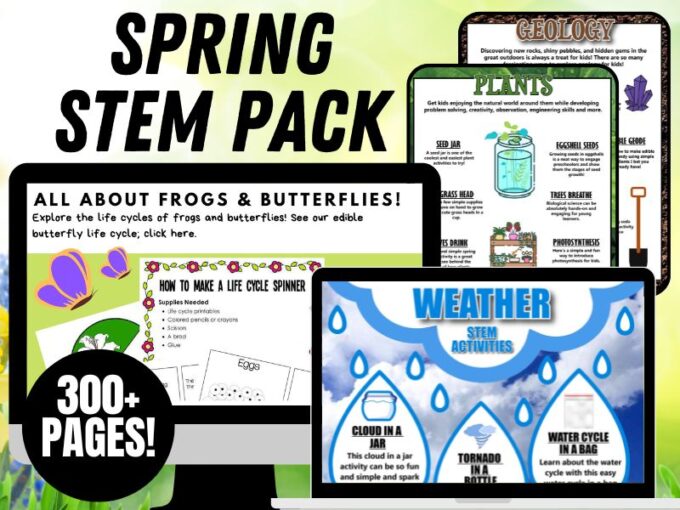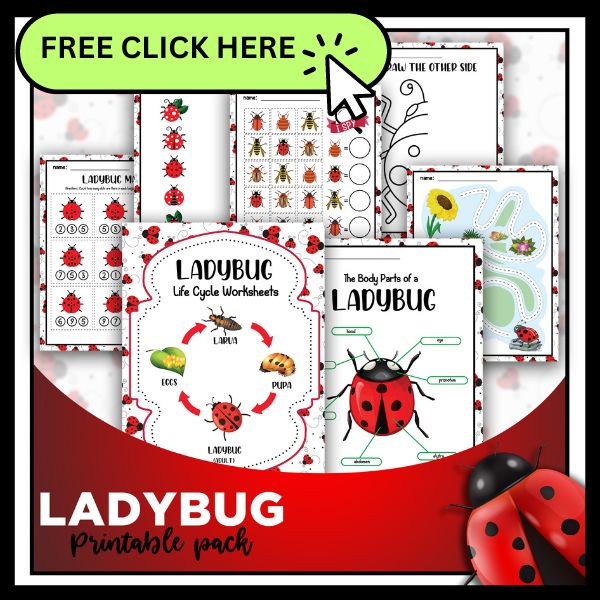Ever had a ladybug land on you? Learn about amazing ladybugs with these fun and free printable life cycle of ladybug worksheets! The is such a fun activity to do in the spring or summer. Find out more fun facts about ladybugs, and the stages of the ladybug life cycle with this printable activity. Pair it with this ladybug craft too for more springtime fun!
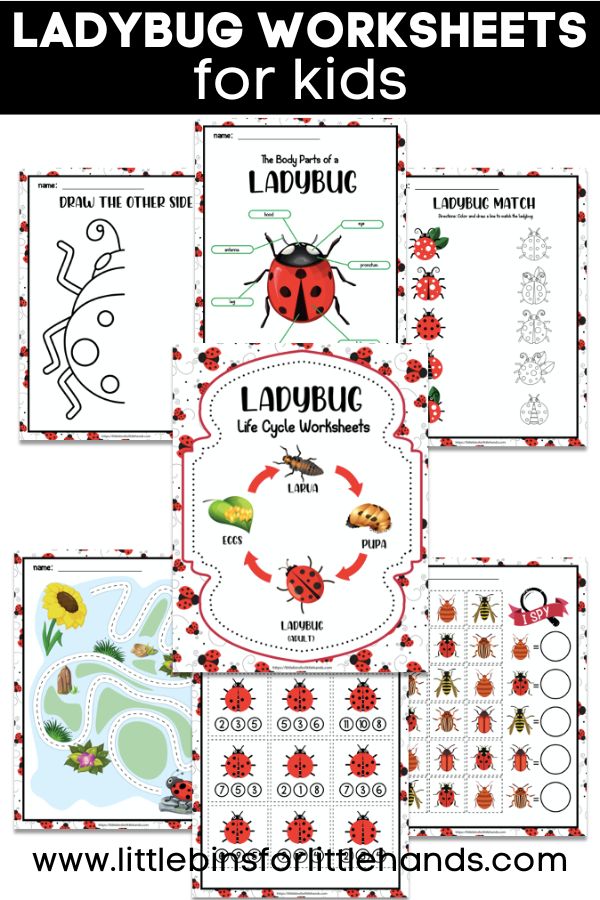
Explore Ladybugs for Spring Science
Spring is the perfect time of year for science! There are so many fun themes to explore. For this time of the year, our favorite topics to teach kids about spring include weather and rainbows, geology, Earth Day, and of course, plants and ladybugs!
Learning about the life cycle of ladybugs is such a great lesson for the spring season! It’s the perfect activity to incorporate into learning about insects and gardens!
Also check out our flower crafts for kids!
Get outside and look for ladybugs this spring! Ladybugs are great to have in your garden because the eat pest insects, and aphids. You might find them on the leaves of your plants and in other warm, dry places where they can find food.
While you’re at it, make sure to check out these other fun spring science activities.
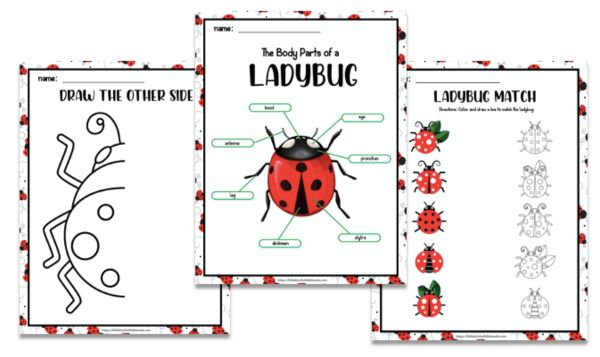
Ladybug Facts For Kids
Ladybugs are important insects in your garden, and farmers love them too! Here are some fun ladybug facts you might not know.
- Ladybugs are beetles with six legs, so they are insects.
- Ladybugs mainly eat aphids. Female ladybugs can eat as many as 75 aphids daily!
- Ladybugs have wings and can fly.
- Ladybugs smell with their feet and antennas.
- Female ladybugs are larger than male ladybugs.
- Ladybugs can have different numbers of spots or no spots at all!
- Ladybugs also come in many different colors including orange, yellow, red or black.
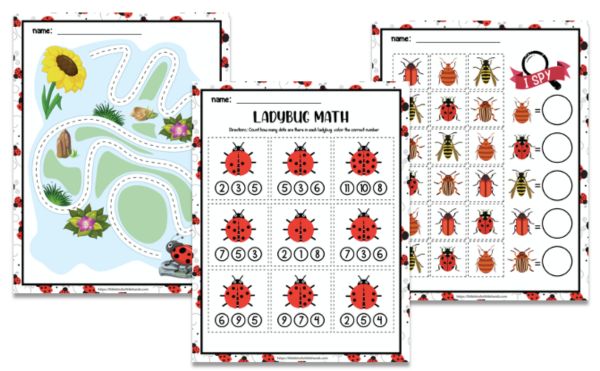
Life Cycle Of A Ladybug
Here are the 4 stages of a ladybug life cycle.
Eggs
The ladybug’s life cycle starts with an egg. Female ladybugs, once mated, will lay up to 30 eggs in a cluster.
The ladybug lays the eggs on a leaf with many aphids so the hatching larva has food. Throughout spring, female ladybugs lay more than 1,000 eggs.
Larva
The larva emerges from the eggs two to ten days after being laid. The time it takes to hatch depends on the temperature and type of ladybug.
Ladybug larvae look like spiky little black and orange bugs. At this stage, ladybug larvae eat a ton! About 350 to 400 aphids in the two weeks it takes to become fully grown. Ladybug larvae also eat other small insects.
Pupa
At this stage, the ladybug is usually yellow or orange with black markings. It doesn’t move and is attached to a leaf for the next 7 to 15 days while it undergoes this transformation.
Adult Ladybug
Once they have emerged from the pupal stage, adult ladybugs are soft and vulnerable to predators until their exoskeleton hardens. Once their wings harden, their true bright color emerges.
Adult ladybugs feed on soft-bodied insects such as aphids and larvae. Over winter, they hibernate. Once spring comes, they become active, mate, and start the life cycle again.
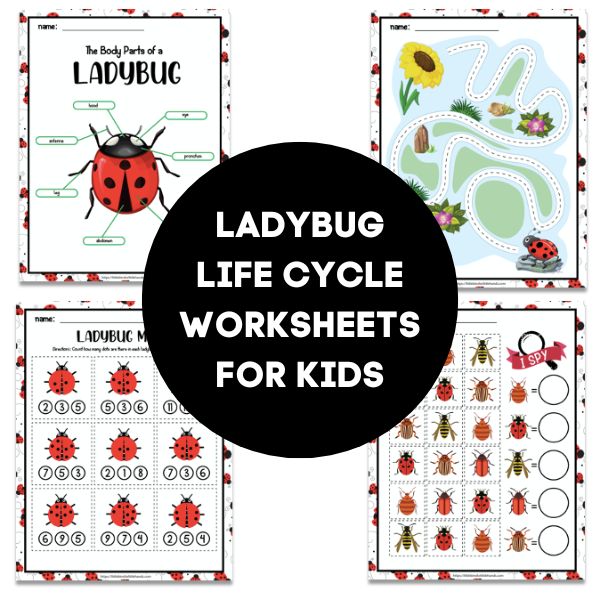
Ladybug Life Cycle Worksheets
This free printable ladybug mini-pack about ladybugs is perfect for preschoolers and elementary-age students. It comes with seven printable pages that are great for an insect theme. The worksheets include:
- Parts of a ladybug diagram
- Labeled ladybug life cycle diagram
- Ladybug math
- I-spy game
- Ladybug matching game
- Ladybug drawing template
- Ladybug trace the line
Use the worksheets from this ladybug activity pack (free download below) to learn, label, and apply the stages of the ladybug life cycle. With these adorable ladybug worksheets, students can see the life cycle of ladybugs and practice math, visual discrimination, and tracing skills!
More Fun Bug Activities
Combine these ladybug life cycle printables with other hands-on bug activities for a fun spring lesson in the classroom or at home. Click on the images or links below.
- Build an insect hotel.
- Explore the life cycle of the amazing honey bee.
- Create a fun bumble bee craft.
- Enjoy hands-on play with bug theme slime.
- Make a tissue paper butterfly craft.
- Make an edible butterfly life cycle.
- Make this simple ladybug craft.
- Make playdough bugs with printable playdough mats.
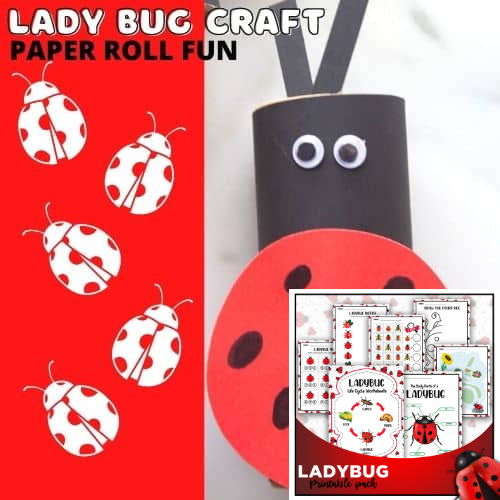
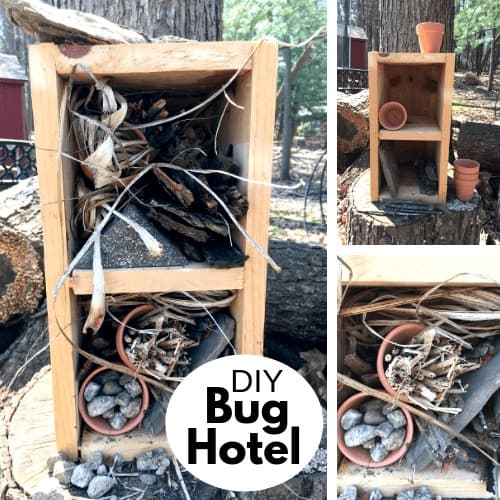
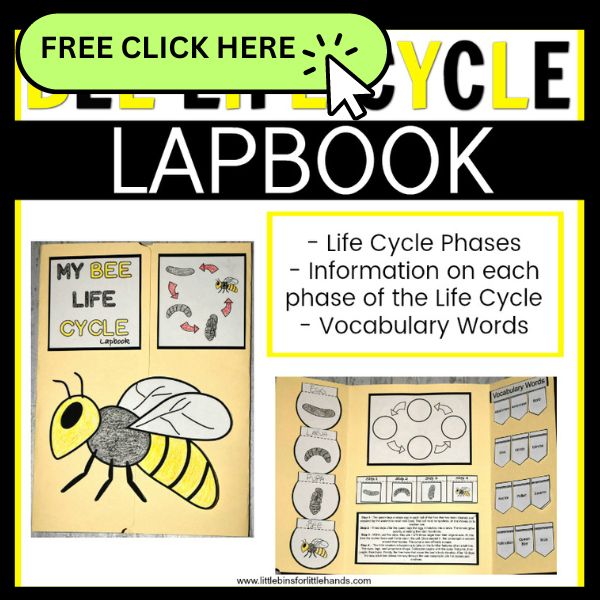
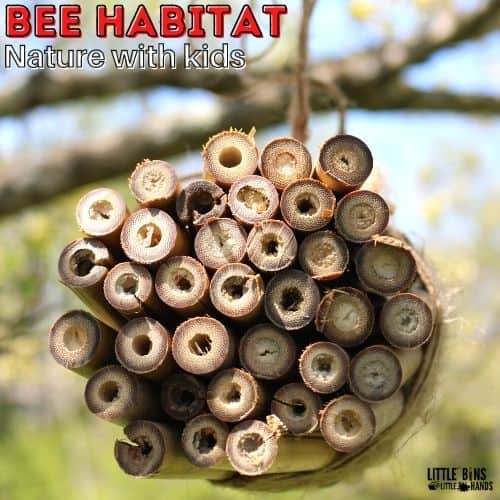
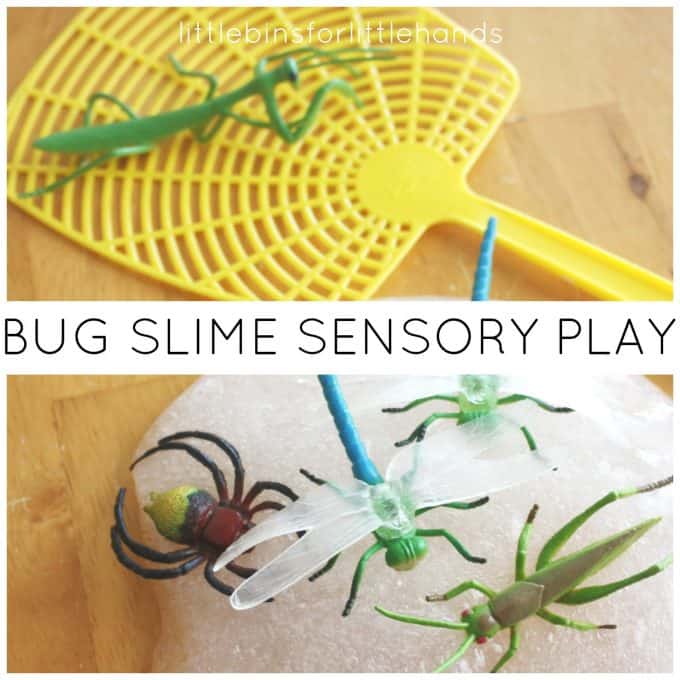
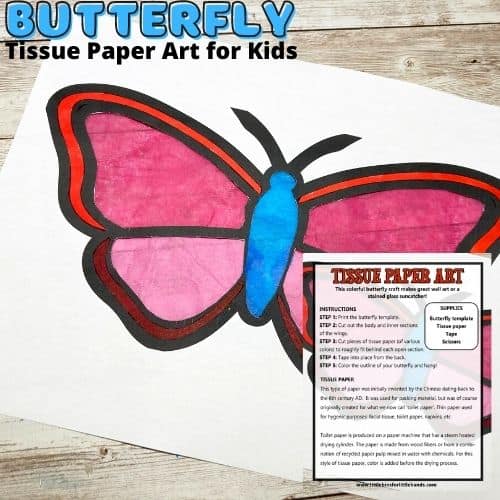
Printable Spring Science Activities Pack
If you’re looking to grab all of the printables in one convenient place plus exclusives with a spring theme, our 300+ page Spring STEM Project Pack is what you need!
Weather, geology, plants, life cycles, and more!
